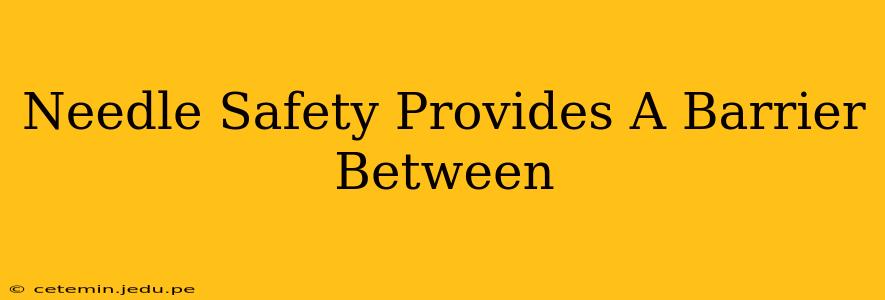The use of needles and other sharp instruments is unavoidable in many healthcare settings. However, these tools present a significant risk of exposure to bloodborne pathogens such as Hepatitis B, Hepatitis C, and HIV. Needle safety devices and practices are crucial in mitigating this risk, providing a vital barrier between healthcare workers and potentially infectious materials.
The Dangers of Needlestick Injuries
Needlestick injuries, resulting from accidental punctures by contaminated needles or other sharp objects, can have severe consequences. Beyond the immediate pain and potential for infection, the long-term effects can include:
- Infectious diseases: Transmission of bloodborne viruses like Hepatitis B, Hepatitis C, and HIV.
- Psychological trauma: The anxiety and fear associated with potential infection can have a significant impact on mental well-being.
- Lost work time: Recovery from infection and the need for testing and treatment can lead to extended periods away from work.
The Role of Needle Safety Devices
A wide array of needle safety devices are now available, significantly reducing the risk of needlestick injuries. These devices incorporate engineered sharps injury protection (ESIP) features, such as:
- Retractable needles: Needles that retract automatically into a protective sheath after use.
- Self-sheathing needles: Needles with a built-in sheath that covers the needle immediately after injection.
- Safety-engineered syringes: Syringes with features that prevent accidental needle dislodgement or recapping.
The effectiveness of these devices has been demonstrated in numerous studies, showing a significant decrease in needlestick injuries in healthcare settings that have adopted their use.
Beyond Devices: Comprehensive Needle Safety Programs
While safety devices are essential, a comprehensive needle safety program encompasses much more:
- Training and education: Healthcare workers must be properly trained in the safe handling and disposal of needles and other sharp instruments.
- Standard precautions: Following universal precautions, treating all bodily fluids as potentially infectious.
- Proper disposal procedures: Using appropriate sharps containers and following established procedures for disposal.
- Regular audits and evaluations: Monitoring the effectiveness of safety measures and making adjustments as needed.
Implementing robust needle safety protocols is not only a moral imperative but also a legal requirement in many jurisdictions. Protecting healthcare workers from the risks associated with needlestick injuries is a fundamental aspect of creating a safe and healthy work environment. The combination of effective safety devices and comprehensive safety programs is crucial in ensuring a barrier between healthcare professionals and the potential dangers of bloodborne pathogens.
